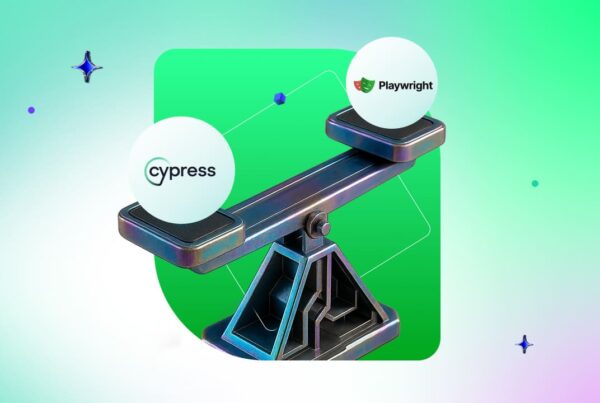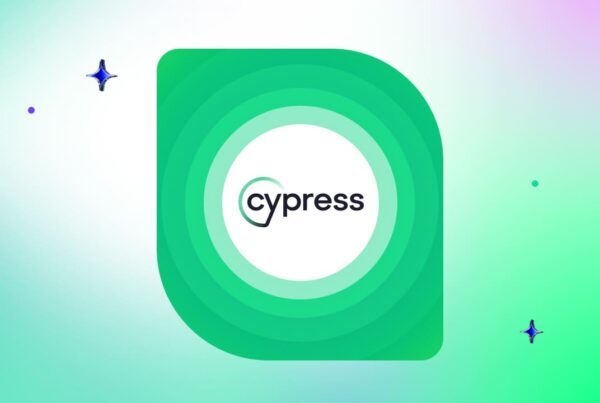Cypress Testing: What It Is, Why It Matters?

Web applications should function seamlessly across browsers and devices to ensure a quality user experience. To achieve this, they must be evaluated on various browsers and actual devices. However, traditional testing methods have certain limitations, like slow execution, complex setups, and incorrect results, which make testing difficult. Cypress testing helps solve these issues.
Cypress is a JavaScript testing framework that runs directly in browsers, making tests faster and more accurate. It easily handles asynchronous operations, network requests, and UI interactions. This makes it useful for both developers and testers. Understanding Cypress JavaScript can improve the quality of your web applications. This Cypress automation tutorial covers Cypress testing, its importance, and how it works.
What is Cypress Testing?
Cypress testing uses the Cypress framework to automate end-to-end testing for web applications. It acts like a virtual user. It clicks buttons, fills out forms, and navigates pages. This helps in identifying issues early in the software development process. If something breaks, Cypress gives instant feedback. This makes troubleshooting easier.
What makes Cypress different is its ability to handle modern web complexities. It waits for elements to load automatically and reduces flaky tests. Developers and testers can watch tests run in real-time, seeing each step. This makes debugging faster and more intuitive.
Cypress can be utilized for testing dashboard pages, shopping carts, and login forms. Due to its compatibility with contemporary web technologies, numerous teams rely on it to enhance software quality. It accelerates development and guarantees an uninterrupted user experience.
How does Cypress work?
Cypress follows a structured process for test execution. It sends test commands to the Test Runner. The Test Runner communicates with a proxy server. This proxy forwards requests to the application server. The server processes requests and sends responses. Cypress captures snapshots and videos during tests. Testers review results to check application behavior. Now let us see how exactly it works:
Setting Up Cypress
Cypress installs as an NPM package. The setup involves these steps:
1. Creating a Project Folder
Navigate to a location and create a folder:
mkdir cypressdemo cd cypressdemo
2. Installing Cypress
Run the command:
npm install cypress --save-dev
3. Opening Cypress
Launch Cypress using:
npx cypress open
This opens the Test Runner with example tests.
Cypress Folder Structure
Cypress creates structured folders for different purposes:
- integration → Contains test scripts
- fixtures → Stores external data
- plugins → Handles pre-processors
- support → Stores utilities and global commands
- assets → Saves screenshots and videos
Writing a Cypress Test
Create a folder in integration (e.g., demo). Inside it, create firsttest.js. Add this test:
describe('My First Test', () => {
it('Launch Browser and Navigate', () => {
cy.visit('https://www.testingplatform.com/');
cy.title().should('eq', 'Most Reliable App & Cross Browser Testing Platform | TestingPlatform');
});
});
Benefits of Automated Deployment:
The testing platform allows Cypress test execution on multiple browsers with parallel testing support. You can run tests using the Cypress Test Runner (UI) or the Command Line (CLI).
1. Cypress Test Runner (UI Mode)
- Navigate to your project folder (cypressdemo).
- Open Cypress Test Runner
npx cypress open
- Click on firsttest.js to execute.
2. Cypress CLI (Command Line Mode)
- Run the test headlessly:
npx cypress open
Running Cypress Locally
- Headed Mode → Opens a browser:
npx cypress open
- Headless Mode → Runs in the background
npx cypress run
Types of Tests You Can Automate with Cypress
The following are the types of tests you can automate using Cypress:
End-to-End Testing
It checks if the entire application works correctly. Cypress web automations involves user interactions like logging in and navigating pages. It verifies the complete user journey and detects issues in workflows.
Integration Testing
Integration testing ensures that different modules communicate correctly. Cypress tests API responses and data handling between components. It helps identify problems when services interact.
Component Testing
Component testing checks individual UI elements for correct behavior. Cypress tests buttons, forms, and widgets separately. It ensures they respond properly to user inputs.
Regression Testing
Regression testing confirms that new changes do not break existing features. Cypress re-executes previous tests after updates. This ensures everything still works as expected.
UI Testing
UI testing verifies visual and interactive elements on a webpage. Cypress checks if buttons, menus, and pop-ups function properly. It also ensures proper display across browsers.
API Testing
API testing validates backend interactions by sending requests. Cypress checks response data and error handling. This helps test web services and database operations.
Best Practices for Cypress Automation
The following are the best practices for Cypress automation testing:
- Create independent tests: Keep each test separate from the others. Do not create dependencies between tests.
- Authenticate applications programmatically: Use API calls for login. This avoids UI-based authentication issues.
- Use data-attributes: Add data-test, data-testid, or data-cy attributes. These make tests more stable and less dependent on selectors.
- Leverage Cypress architecture: Use built-in commands. This makes tests reliable and easy to maintain.
- Avoid after and afterEach hooks: These hooks may not always execute properly. If they fail, Cypress may stop running tests.
- Do not use cy.wait(): Cy.wait() slows down tests. Use Cypress’s built-in wait mechanisms instead.
- Do not start the web server with cy.task() or cy.exec(): Ensure the application is running before tests begin.
- Configure cypress.json properly: Set the correct baseURL in the configuration file. Use environment variables for flexible test execution.
Why ACCELQ is a Strong Alternative to Cypress?
Cypress testing framework and ACCELQ serve different automation needs. Cypress requires JavaScript skills. ACCELQ is codeless and AI-driven, suitable for non-programmers.
Test Automation Scope
ACCELQ automates web, API, mobile, and desktop tests. It ensures seamless validation in a single flow. Cypress mobile testing is not natively supported, but it focuses on web testing. API testing requires extra setup.
Element Recognition
ACCELQ uses a locator-free and smart locator approach to element identification, along with self-healing capabilities driven by AI. It adapts to UI changes, reducing maintenance. Cypress relies on static selectors like IDs and classes. UI changes often require test updates.
Collaboration and Reporting
ACCELQ is a cloud-based solution that supports multiple users. It has built-in test management, version control, and detailed reporting. Cypress needs external tools like GitHub for version control. Advanced reporting requires extra libraries.
ACCELQ Delivers What Cypress Misses
- No-code automation helps manual testers contribute.
- AI-powered self-healing reduces maintenance.
- Single platform supports Web, API, and Mobile testing.
- Seamless integration with CI/CD and test management tools.
- A cloud-based environment enables real-time collaboration.
Conclusion
Cypress is a modern test framework for web applications. It offers fast execution with real-time debugging features. One key advantage is its automatic waiting feature. This removes the need for adding waits in scripts. The built-in test runner helps with execution logs. It also provides snapshots for quick issue identification.
However, Cypress has some limitations in automation. It lacks built-in support for multi-browser testing. It also does not support mobile applications. ACCELQ provides a codeless, AI-driven automation platform. Testers can write test logic in plain English. This removes programming barriers and simplifies automation. Thus, ACCELQ is an excellent option. It streamlines testing and lowers technical dependencies. Try it today.
Prashanth Punnam
Sr. Technical Content Writer
With over 8 years of experience transforming complex technical concepts into engaging and accessible content. Skilled in creating high-impact articles, user manuals, whitepapers, and case studies, he builds brand authority and captivates diverse audiences while ensuring technical accuracy and clarity.
You Might Also Like:
 Cypress vs Playwright: Which Frontend Testing Tool Reigns Supreme
Cypress vs Playwright: Which Frontend Testing Tool Reigns Supreme
Cypress vs Playwright: Which Frontend Testing Tool Reigns Supreme
 Want a Flawless Website? Follow this Website QA Checklist!
Want a Flawless Website? Follow this Website QA Checklist!
Want a Flawless Website? Follow this Website QA Checklist!
 Cypress Testing: What It Is, Why It Matters?
Cypress Testing: What It Is, Why It Matters?
































